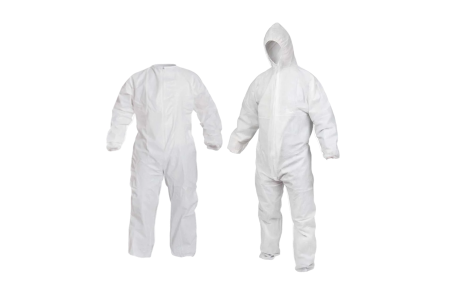2023/8/16

How to Choose the Right Microporous Protective Coverall
Whether you’re a production technician or a technical engineer, there’s a good chance you work in the manufacturing industry. Working with various materials and processes, manufacturing technicians and engineers are called upon to design, build, test and maintain production lines. Microporous protective coveralls are an essential part of any manufacturing operation. Check out this article for tips on how to choose the right microporous protective coverall:
What Do You Need Your Protective Coverall for?
Before you buy a protective coverall, you should determine the purpose of your purchase. There are a few important things you’ll want to keep in mind. - What is the environment in which you will be working? If the atmosphere is corrosive, you will need a different type of coverall than if you are working in a cooler environment. Certain fabrics are more suited to certain environments. If your workplace is prone to dust explosions or flammable vapors, you’ll need a coverall that protects you from these hazards.
- What do you want to protect yourself from while you are working? If you want to protect yourself from cuts and scrapes, you’ll want a coverall with a high degree of abrasion resistance. If you want to protect yourself from potential hazards, like hot surfaces or high voltages, you’ll need a coverall that has a high degree of electrical resistance.
- What do you want to perform your job duties in? If you only want to wear your protective coverall as a final step in your day’s work, you can select a lightweight fabric. If you want to wear your protective coverall at all times, you’ll want to select a heavier-weight fabric.
Choose a Fabric with High Microporous Permeability
When choosing a fabric for your microporous coverall, you’ll want to select a fabric with high microporous permeability. Microporous coveralls with low microporous permeability wick moisture away from your body, promoting rashes and other skin irritations. High-microporous coveralls will allow moisture to through the fabric. However, the high-microporous coveralls will quickly wick the moisture away from your body, preventing rashes and other skin irritations. If you’re working in an area where you’re exposed to extreme conditions, like a chemical plant or dry cleaners, you’ll want a coverall with high microporous permeability.
Look for Coveralls with Certain Features
There are a few features you’ll want to look for when choosing a protective coverall. - Weave construction: Each fabric has a weave that affects the way the fabric will wear. A twill weave is tougher and less likely to fray than a cotton weave. - Rip-Stop construction: This construction is designed to resist tearing at sharp edges. Usually, the rip-stop is a thick, woven layer of nylon. - DWR (Durable Water Repellent) coating: This coating softens and repels water. It’s especially helpful in hot environments. - Durability: Find a fabric with a proven track record of durability.
Avoid Microporous Coveralls that aren’t Certified or Tested
Many fabric vendors call their fabric “microporous”. However, a fabric with high microporous permeability isn’t a guarantee of a protective coverall. Only certifiable fabrics protect you from hazards. Most fabric vendors that claim to have microporous fabric are certified by an independent lab. However, few suppliers are tested. If you don’t know who made your protective coverall, be sure to look for certifications, testing and a reasonable warranty.
Conclusion
Choosing the best protective coverall can be challenging. We’ve outlined the most important things to consider when choosing a protective coverall. If you follow these tips, you’ll find the right protective coverall for your job.




 WhatsApp
WhatsApp
Send us your message
You can send an email asking for the price and detailed information of this product. We will reply you as soon as we receive your email